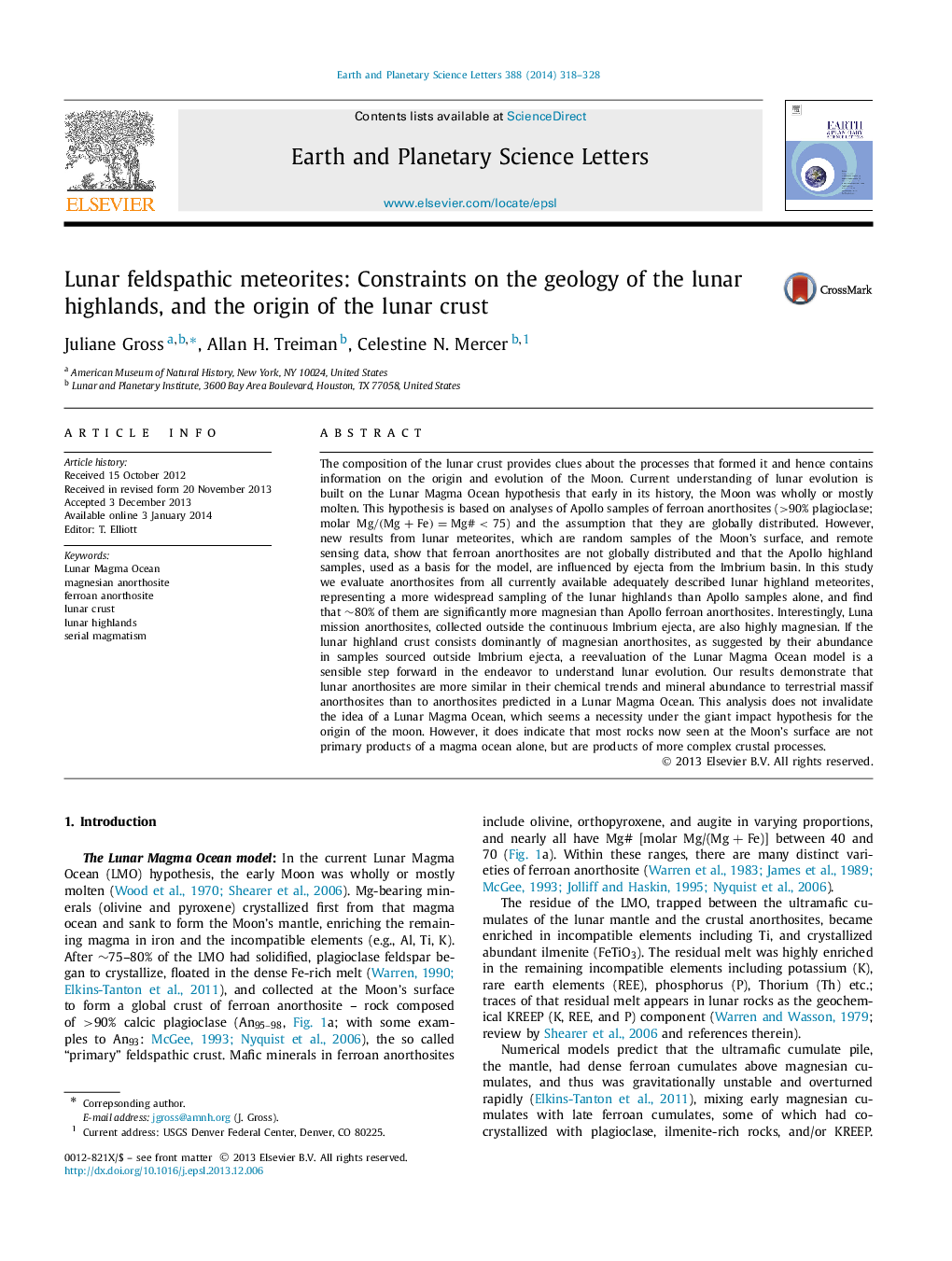| کد مقاله | کد نشریه | سال انتشار | مقاله انگلیسی | نسخه تمام متن |
|---|---|---|---|---|
| 6429798 | 1634768 | 2014 | 11 صفحه PDF | دانلود رایگان |
- We present compositional data of anorthosites in lunar feldspathic meteorites.
- Meteoritic anorthosites are distinct from the Apollo ferroan anorthosites.
- Meteoritic anorthosites are too magnesian to be products of the Lunar Magma Ocean.
- Properties of meteoritic anorthosites are similar to terrestrial massif anorthosites.
- Most rocks seen at the Moonʼs surface are a product of complex crustal processes.
The composition of the lunar crust provides clues about the processes that formed it and hence contains information on the origin and evolution of the Moon. Current understanding of lunar evolution is built on the Lunar Magma Ocean hypothesis that early in its history, the Moon was wholly or mostly molten. This hypothesis is based on analyses of Apollo samples of ferroan anorthosites (>90% plagioclase; molar Mg/(Mg+Fe)=Mg#<75) and the assumption that they are globally distributed. However, new results from lunar meteorites, which are random samples of the Moonʼs surface, and remote sensing data, show that ferroan anorthosites are not globally distributed and that the Apollo highland samples, used as a basis for the model, are influenced by ejecta from the Imbrium basin. In this study we evaluate anorthosites from all currently available adequately described lunar highland meteorites, representing a more widespread sampling of the lunar highlands than Apollo samples alone, and find that â¼80% of them are significantly more magnesian than Apollo ferroan anorthosites. Interestingly, Luna mission anorthosites, collected outside the continuous Imbrium ejecta, are also highly magnesian. If the lunar highland crust consists dominantly of magnesian anorthosites, as suggested by their abundance in samples sourced outside Imbrium ejecta, a reevaluation of the Lunar Magma Ocean model is a sensible step forward in the endeavor to understand lunar evolution. Our results demonstrate that lunar anorthosites are more similar in their chemical trends and mineral abundance to terrestrial massif anorthosites than to anorthosites predicted in a Lunar Magma Ocean. This analysis does not invalidate the idea of a Lunar Magma Ocean, which seems a necessity under the giant impact hypothesis for the origin of the moon. However, it does indicate that most rocks now seen at the Moonʼs surface are not primary products of a magma ocean alone, but are products of more complex crustal processes.
Journal: Earth and Planetary Science Letters - Volume 388, 15 February 2014, Pages 318-328
